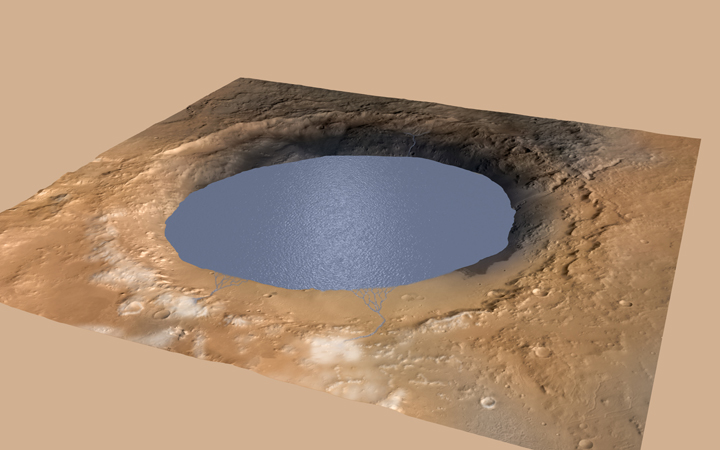TORONTO – On Monday, NASA revealed new findings from the Mars Curiosity rover that suggest that the planet’s Mount Sharp was built out of sediments left in a large lake bed over tens of millions of years.

Curiosity collected the data while in Gale Crater, on its way up Mount Sharp, a five-kilometre tall mountain.
READ MORE: Mars dirt a water reservoir, Curiosity finds
The layers at the base of Mount Sharp alternate between lake, river and wind deposits which suggests that the lake repeatedly filled and then evaporated.
“The great thing about a lake that occurs repeatedly, over and over, is that each time it comes back it is another experiment to tell you how the environment works,” Grotzinger said. “As Curiosity climbs higher on Mount Sharp, we will have a series of experiments to show patterns in how the atmosphere and the water and the sediments interact. We may see how the chemistry changed in the lakes over time. This is a hypothesis supported by what we have observed so far, providing a framework for testing in the coming year.”
Scientists have long wondered why five-kilometre tall Mount Sharp sits in a crater. Another thing scientists have sought to understand is the difference in rock layers, which alternate between lake, river and wind deposits. This suggests that the crater filled with water which then evaporated lasting far longer than believed.
- Invasive strep: ‘Don’t wait’ to seek care, N.S. woman warns on long road to recovery
- Ontario First Nation declares state of emergency amid skyrocketing benzene levels
- Do Canadians have an appetite for electric vehicles? Experts are divided
- Nearly 200 fossil fuel, chemical lobbyists to join plastic treaty talks in Ottawa
“We are making headway in solving the mystery of Mount Sharp,” said Curiosity Project Scientist John Grotzinger of the California Institute of Technology in Pasadena, California. “Where there’s now a mountain, there may have once been a series of lakes.”
Though water is now believed to have existed on the planet’s surface, the question is how long it lasted and whether or not it was long enough to present a habitable environment for life.
Meanwhile, the science collected from the planet will also help pave the way for future manned missions to the red planet.



Comments